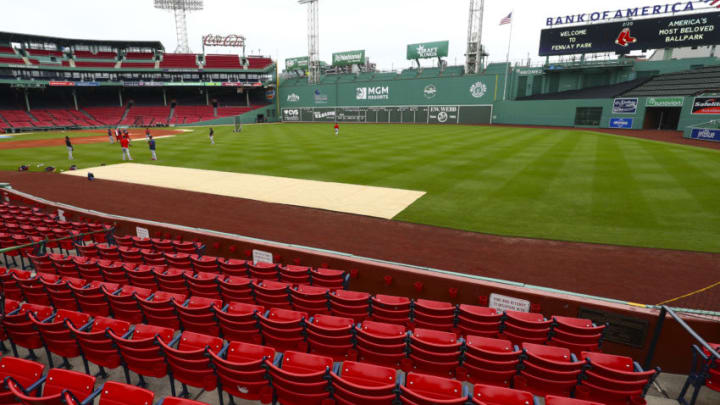The early 1960s Boston Red Sox were apparently a hard bunch to watch, so much so attendance at Fenway Park sunk to the hundreds.
I have never been a fan of the Boston Red Sox as much as I have of Fenway Park. Maybe it’s the fact the stadium is so old and it appeals to my no frills-baseball traditionalist background. Maybe it’s all the great historic names who have played there.
Having only been to Fenway Park twice to watch games, I made sure I made the most of each visit. I walked the entirety of the stadium and took hundreds of pictures. Each stadium is unique for a reason, especially one which dates back as far as Fenway.
More from Call to the Pen
- Philadelphia Phillies, ready for a stretch run, bomb St. Louis Cardinals
- Philadelphia Phillies: The 4 players on the franchise’s Mount Rushmore
- Boston Red Sox fans should be upset over Mookie Betts’ comment
- Analyzing the Boston Red Sox trade for Dave Henderson and Spike Owen
- 2023 MLB postseason likely to have a strange look without Yankees, Red Sox, Cardinals
The intimacy the stadium offers is really unlike any other venue I have taken in a baseball game. With the closeness to the field, the under bleacher concessions, the painted brick, the rustic features are endless.
Wanting to learn a little bit more about the Red Sox and the man who owned them for more than forty years, I picked up the book, Tom Yawkey: Patriarch of the Boston Red Sox, by Bill Nowlin.
Midway through the book, the discussion of the early ’60s teams came to light. Towards the end of the 1964 season, the Red Sox were well on their way to a sixth straight losing season. Boston fans were tired of the losing and apparently a lineup featuring the likes of Carl Yastrzemski, Tony Conigliaro, and Dick Stuart could not entice spectators into stadium seats.
Rock bottom hit during game 160 of the year. Riding a six-game losing streak, with just three games left on the schedule, Red Sox pitcher Ed Connely scattered eight hits and seven walks over 6.1 innings to beat the Cleveland Indians 4-2.
The game was played in under two and a half hours and in front of 306 fans.
306 fans!
After reading this in the book I had to go to baseball-reference.com to do a little more research. The only notes listed were this game was rescheduled to make up for a rainout a few days earlier.
306 fans?
Maybe the stadium wasn’t in as great of shape as it is now. Maybe Fenway Park didn’t have the historic allure back then. Though maybe Fenway did have the draw. Even without putting a winning team on the field, doesn’t the venue alone bring in more fans than it did on Thursday, October 1st, 1964?
The following year, in a season which would ultimately end with 62 wins against 100 losses, the Sox had back to back games against the California Angels where 461 and 409 people showed up.
These are drastic numbers considering the 2000s were dominated by sellouts at Fenway Park. 820 consecutive sellouts in fact (794 regular season and 26 post-season). Both are the longest streaks in all professional sports.
At the time the streak ended, Boston Red Sox chairman Tom Werner stated:
"The streak is a reflection of a phenomenal period of baseball in Boston and of America’s greatest ballpark,” Henry said. “But more than that, it is a testament to the baseball passion of New England fans. As we close the book on this incredible era, we look forward to another with a renewed certainty that the next couple of generations of Red Sox fans will also be enjoying baseball at the ever magical Fenway Park"
If the park is America’s greatest and Fenway is magical, why weren’t fans coming out in the early 60s? Was it really because the team wasn’t putting a winning product on the field?
Fenway Park is magical, and regardless of the talent being ushered out each night, the stadium alone is worth the price of admission.
